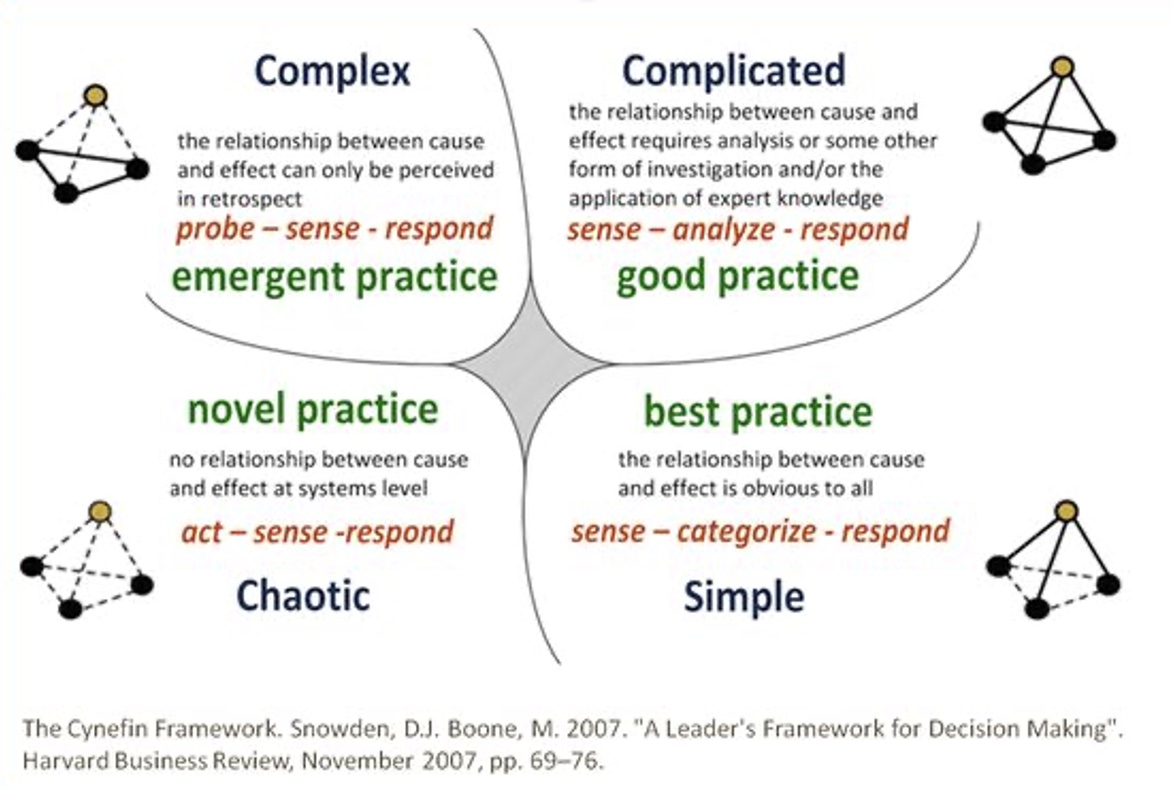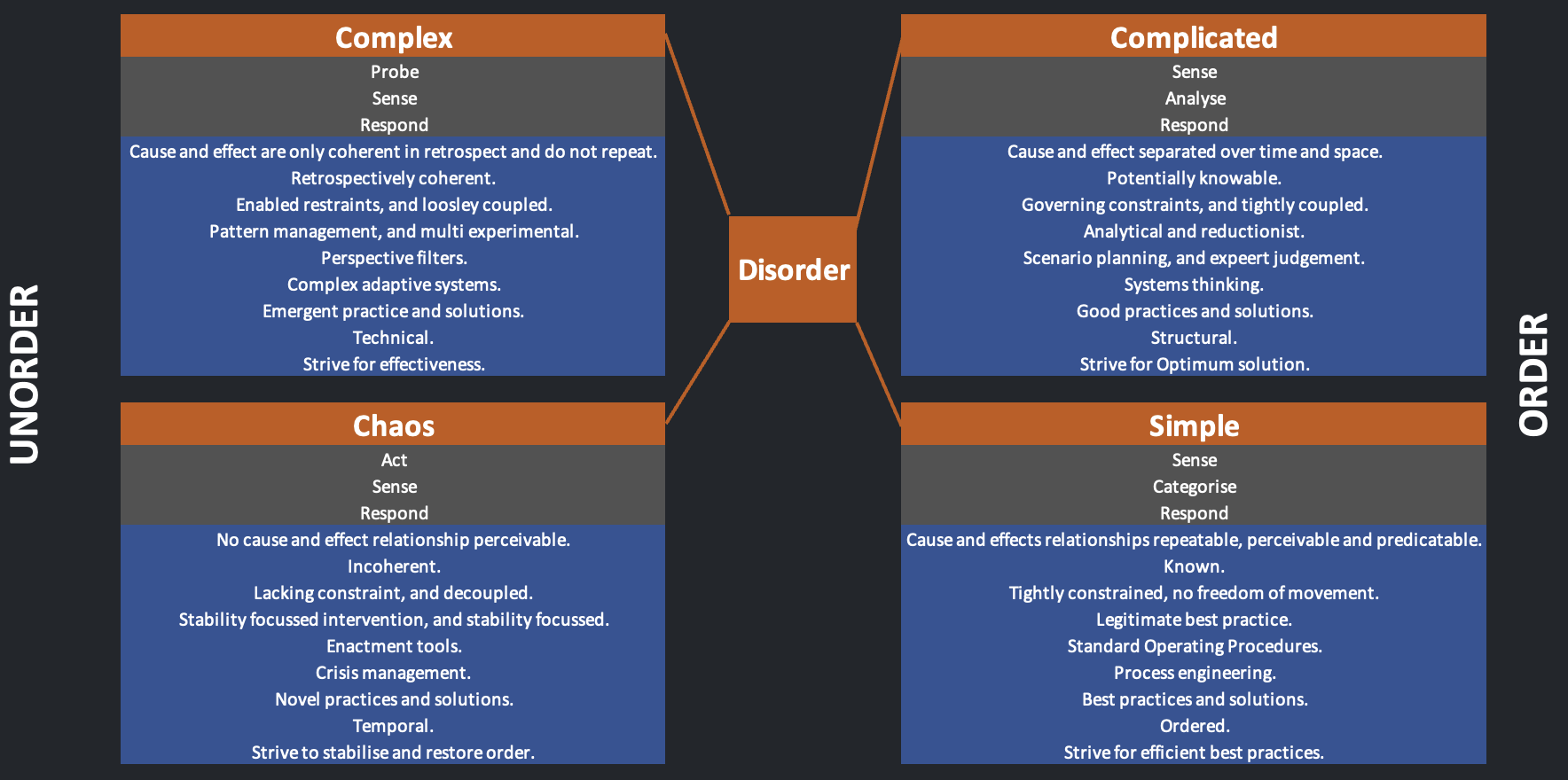In these times of global information, democratisation and porous boundaries, we can all agree that life is both complex and complicated. But do we really understand what we mean by these terms? Are they interchangeable or do they have subtle differences that allow us to understand the world around us in a more nuanced and useful way?
Sensemaking: the process by which people give meaning to their collective experiences
Sensemaking has been defined as "the ongoing retrospective development of plausible images that rationalize what people are doing" and is a shift away from the traditional focus by organisation theorists on decision-making and more towards the processes that constitute the meaning of the decisions that are enacted in behaviour.
The Cynefin Framework
Cynefin is a Welsh word for Habitat and has been described as being akin to the te reo Māori word tūrangawaewae, meaning a place to stand, or the "ground and place which is your heritage and that you come from".
Developed by Dave Snowden in 1999 when working for IBM Global Services1, the Cynefin Framework is used as a sensemaking construct tool designed to guide professionals when making decisions, by analysing the context in which those decisions are made. These context domains are either Complex, Complicated, Chaotic or Simple. Within each of these domains, specific decision actions are shown as:
Chaotic: act, sense and respond
Complex: probe, sense and respond
Complicated: sense, analyse and respond
Simple: sense, categorise and respond

Here, we will focus on Complex vs Complicated.
How does the Cynefin Framework work in practice?
A car and a plane are Complicated. There are conceived, designed, constructed, tested, and used via the application of best practice. Essentially, (and apologies to automotive and aviation experts!) you could take a car and a plane apart into its constituent parts, and then put it together again. You understand the relationship between cause and effect in advance. In this case you would Sense (I know I am going to take apart and reassemble a plane/car), Analyse (what is needed for the tasks via best practice) and Respond (take apart and reassemble a plane/car). Preferably with no nuts and bolts left over!
Now Complex is a different domain and sits between complicated and chaotic. In complex situations the relationship between cause and effect is only known retrospectively – or with the benefit of hindsight. It recalls the term ‘here goes nothing’ when attempting an act of which you do not know the outcome.
As an example; no one (and apologies to economists) predicted the complex and multi-causal preconditions, and human suffering, of the 2007-2008 international banking crisis. We now understand the causes: predatory lending by banks targeting low-income homebuyers, unregulated excessive risk-taking by global financial institutions, and the bursting of the United States housing bubble with mortgage-backed securities tied to American real estate, as well as a vast international web of linked collateralised derivatives that collapsed in value.
In this case, all the information was there (and always had been), yet retrospectivity ruled the day. So, in retrospect the global actions were to Probe (what was unknown going on that should have been known), Sense (now we know what we didn’t know, so we can assess), and Respond (in this case, government bailouts and other palliative monetary and fiscal policies). In other words, more actions against problem resolution, rather than solution.
So, for us mere mortals, our aim is to tailor our approach to fit the complexity of the circumstances we face. A more detailed analysis of the decision-making process, dependent on the complexity, is detailed below.

Using the Cynefin framework can help executives sense which context they are in so that they can not only make better decisions, but also avoid the problems that arise when their preferred management style causes them to make mistakes.
See Harvard Business Review, A Leader’s Framework for Decision Making, by David J. Snowdon and Mary E. Boone, November 2007.↩
